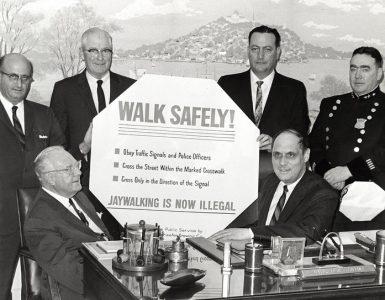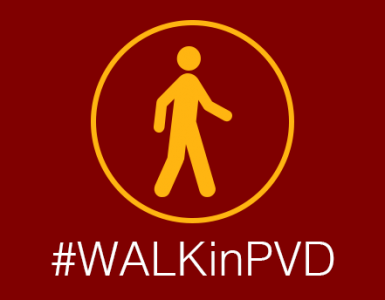
Ljubljana – Photo (cc) Gilad Rom
BuzzFeed News It Will Soon Be More Expensive To Jaywalk Than To Drink And Drive In Nova Scotia
This year the province is upping its fines for jaywalking to $700 for a first offence. It’s $1,272 for a second offence and a whopping $2,422 for a third offence.
[…]Ultimately, said [Ben] Wedge [chair of the Halifax Cycling Coalition], pedestrians are already careful because they know that they’re the ones who are going to be injured in a collision, not the driver.
“The punishment has to be proportional to the crime committed,” he said.
CityLab How Ljubljana Turned Itself Into Europe’s ‘Green Capital’
Now, not just these riverside streets but all of Ljubljana’s compact core is essentially car-free. Only pedestrians, bicycles, and buses are allowed; an electric taxi service called Kavilir offers the elderly, disabled or mothers with children free rides. If you live in the center or want to drive there, you must park your vehicle at an underground garage just outside the car-free area and walk from there. Fears that this would kill local businesses never came to pass. If anything, business and tourism have increased in the historic center.
Ljubljana’s successful fight against traffic is one reason the European Commission named the city European Green Capital for 2016. That’s a title that has frequently gone to acknowledged leaders of the debate on urban sustainability, wealthy cities such as Copenhagen, Stockholm or Hamburg. The choice of Slovenia’s small capital shows that cities of modest size and means have lessons to offer, too. It also shows that smaller cities can make a staggering amount of change happen in a short period of time.
Streetsblog Highway Boondoggles: Widening I-95 Across Connecticut
Connecticut Governor Dannel Malloy has proposed a 30-year, $100 billion plan to invest in transportation across the state. More than 10 percent of that spending, $11.2 billion, is dedicated to reversing decades of Connecticut’s planning priorities by adding an additional lane to I-95 across the entire state — 110 miles from the New York state line to the Rhode Island border.
Malloy says his proposal will reduce congestion, despite years of industry and academic research showing that widening highways is an expensive and ineffective way to solve congestion-related problems. “You can’t build your way out of congestion,” the chief planner of the Connecticut Department of Transportation told the Connecticut Post in October 2015.
Streetsblog Social Engineering! Cities That Build More Parking Get More Traffic
Build parking spaces and they will come — in cars. New research presented this week at the annual meeting of the Transportation Research Board finds a direct, causal relationship between the amount of parking in cities and car commuting rates.
[…]The study brings home the point that by inflating the parking supply via minimum parking mandates and other policies, cities are leading more people to drive and making conditions worse for transit, biking, and walking. It’s what you might call “social engineering.”
[…]In Hartford, for instance, the number of parking spaces in the city increased from about 15,000 in 1960 to about 47,000 by 2000. The city’s solo car commuting rate over that time rose more than 20 percentage points.






Good choice of items.
Widening I-95 in CT to the RI border will increase pressure on RI to do the same thing. The idea is already in our long term plan but on the back burner for now due to the well known financial limitations due to so much repair work needed. But with tolls presumably going on forever,after 10 years or so, this may come to the fore, as the poor dears on I-95 near CT sometimes have to slow below 65mph, cant have that.
I wonder how many parking spaces Providence has gained over the 40 years as compared to Hartford. Plenty more coming. Its amazing they don’t pass a law you have to drive or pay a parking-avoidance tax.